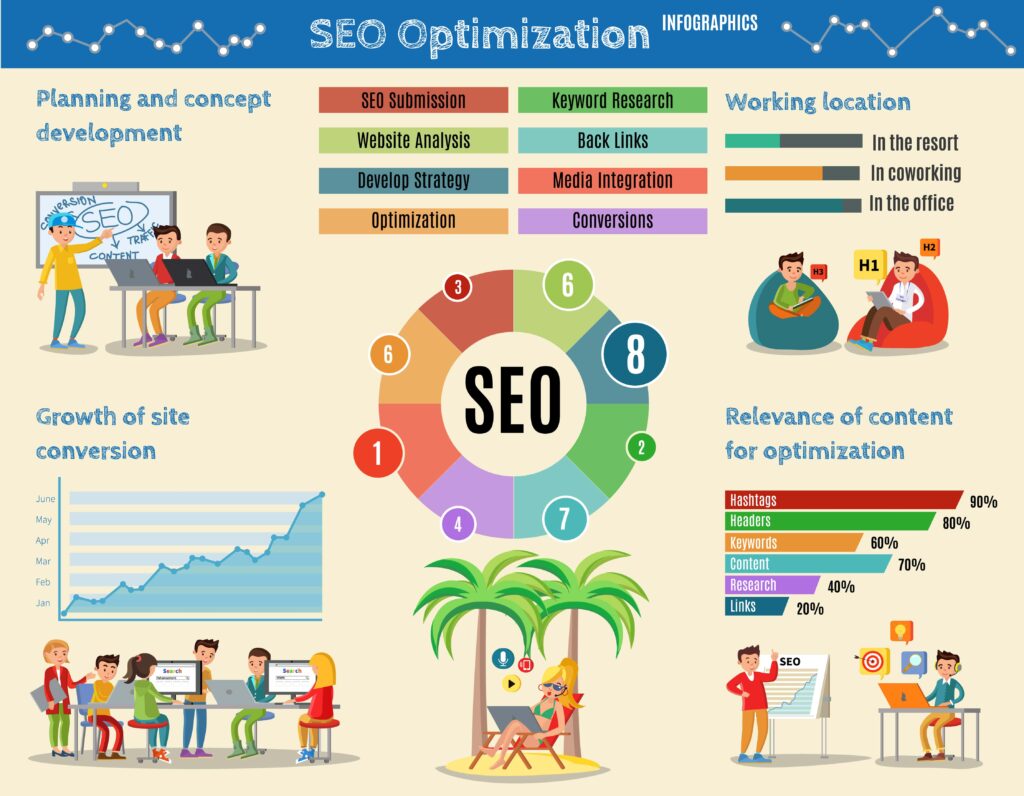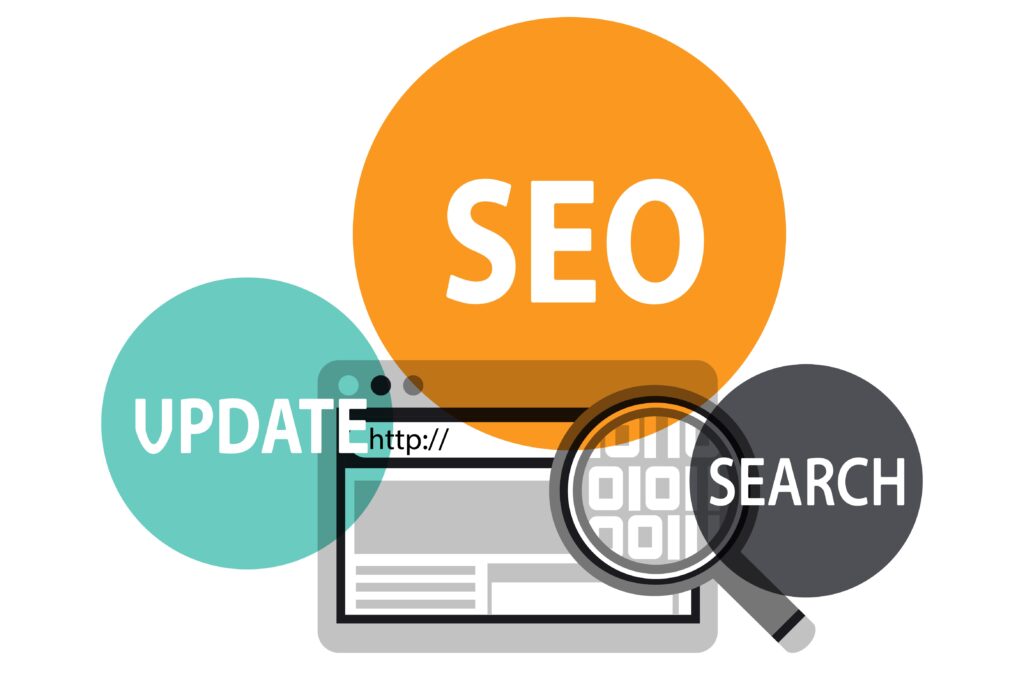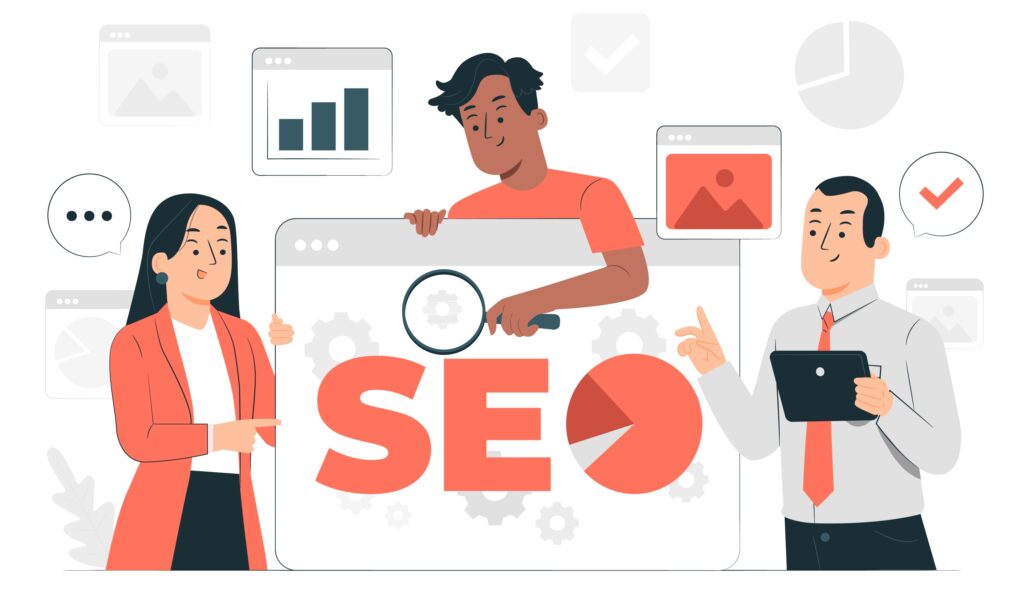In the competitive digital landscape of Los Angeles and the broader California market, achieving high rankings on search engines like Google is crucial for online success. Search Engine Optimization (SEO) is the practice of optimizing your website to increase its visibility in search engine results pages (SERPs) when users in Southern California search for your products or services. However, not all SEO strategies are created equal. There are ethical, sustainable approaches (White Hat SEO) and deceptive, risky tactics (Black Hat SEO).
This comprehensive guide explores the fundamental differences between White Hat and Black Hat SEO, highlighting why ethical strategies are not only more sustainable but also more effective in the long run. We’ll examine the best practices recommended by industry experts, including tools from The Digital IT Solutions that can help you implement effective, ethical SEO strategies.
Understanding SEO Fundamentals
Before diving into the specifics of White Hat and Black Hat SEO, it’s essential to understand what search engines like Google are designed to do. Search engines aim to provide users with the most relevant, valuable, and trustworthy content in response to their queries.
Google’s algorithms consider hundreds of factors when ranking websites, including:
- Content quality and relevance: How well your content satisfies user intent
- Technical performance: Site speed, mobile-friendliness, and accessibility
- User experience: How visitors interact with your site
- Backlink profile: The quality and quantity of sites linking to yours
- E-A-T factors: Expertise, Authoritativeness, and Trustworthiness
Understanding these fundamentals is crucial because they form the foundation of effective, ethical SEO strategies.
White Hat SEO: Ethical Optimization

White Hat SEO refers to ethical optimization practices that comply with search engine guidelines and focus on providing value to users. These approaches aim for sustainable, long-term results by creating content and user experiences that genuinely deserve high rankings.
Core Principles of White Hat SEO
1. User-Centric Content Creation
White Hat SEO places users at the center of all content decisions. This means creating comprehensive, accurate, and engaging content that answers users’ questions and solves their problems. High-quality content:
-
- Addresses specific user needs and search intent
- Provides comprehensive coverage of topics
- Contains accurate, up-to-date information
- Is well-written, engaging, and easy to understand
- Includes relevant multimedia elements when appropriate
2. Technical Excellence
Ethical SEO prioritizes technical optimization that enhances user experience:
-
- Fast-loading pages across all devices
- Mobile-responsive design
- Clean, crawlable site architecture
- Accessible design for all users, including those with disabilities
3. Natural Link Building
White Hat link building focuses on earning backlinks through valuable content and genuine relationships:
-
- Creating link-worthy content that others naturally want to reference
- Building relationships with industry partners and influencers
- Guest posting on relevant, high-quality websites with editorial standards
- Participating meaningfully in online communities and discussions
- Creating shareable assets like original research, infographics, or tools
4. Transparent On-Page Optimization
Ethical on-page optimization enhances content without manipulation:
-
- Using descriptive, relevant title tags that accurately represent page content
- Writing meta descriptions that provide a clear summary of what users will find
- Incorporating keywords naturally within content
- Using header tags to create logical content hierarchy
- Adding alt text to images for accessibility and context
Black Hat SEO: Risky Shortcuts

Black Hat SEO encompasses deceptive practices designed to manipulate search engine algorithms rather than provide value to users. These tactics often deliver short-term ranking gains but carry significant risks, including severe penalties and permanent loss of visibility.
Common Black Hat SEO Tactics
1. Keyword Stuffing
involves overloading content with keywords in an unnatural, spammy manner to manipulate rankings. Examples include:
-
- Repeating the same phrases excessively
- Adding irrelevant keywords
- Hiding keywords in the background or making them invisible
- Creating nonsensical sentences packed with keywords
2. Link Schemes
Manipulative link building practices violate Google’s guidelines:
-
- Buying backlinks from other websites
- Participating in link exchanges or “link farms”
- Using automated programs to create artificial links
- Creating private blog networks (PBNs) solely for linking purposes
- Comment spam with embedded links
3. Content Manipulation
These tactics attempt to deceive both users and search engines:
-
- Cloaking (showing different content to search engines than to users)
- Doorway pages designed only for search engines
- Scraping content from other websites
- Automatically generated content with little value
- Bait-and-switch practices (changing content after ranking)
4. Hidden Text and Links
Concealing content from users while making it visible to search engines:
-
- Using text colored to match the background
- Placing text behind images
- Using CSS to position text off-screen
- Setting font size to zero
- Hiding links in single-pixel images or small characters
Key Differences Between White Hat and Black Hat SEO

The fundamental differences between these approaches extend beyond specific tactics to encompass overall philosophy, timeline, risk level, and results:
1. Underlying Philosophy
- White Hat SEO: Focuses on creating value for users first, understanding that search engines reward sites that best serve user needs.
- Black Hat SEO: Prioritizes manipulating algorithms over serving users, seeking to exploit loopholes for quick ranking gains.
2. Timeline and Sustainability
- White Hat SEO: Takes a long-term approach, building sustainable traffic and authority over time through consistent quality.
- Black Hat SEO: Aims for quick wins and short-term results, often requiring constant tactical changes as search engines update algorithms.
3. Risk Level
- White Hat SEO: Minimal risk of penalties since practices align with search engine guidelines and best practices.
- Black Hat SEO: High risk of severe penalties, including algorithmic downgrades or manual actions that can remove sites from search results entirely.
4. Quality of Traffic
- White Hat SEO: Attracts relevant, engaged visitors who find genuine value in your content.
- Black Hat SEO: May drive lower-quality traffic with poor engagement metrics and conversion rates.
5. Brand Reputation
- White Hat SEO: Enhances brand reputation through quality content and positive user experiences.
- Black Hat SEO: Risks damaging brand reputation if deceptive practices are discovered by users or competitors.
White Hat SEO Best Practices
Implementing ethical SEO strategies requires a multifaceted approach that prioritizes user experience while optimizing for search engine visibility. When paired with effective content marketing strategies, these best practices create a powerful foundation for sustainable SEO success:
1. Comprehensive Keyword Research
Effective keyword research forms the foundation of successful SEO:
- Search intent analysis: Understand what users are actually looking for when they use specific search terms
- Long-tail keyword targeting: Focus on specific, less competitive phrases that indicate high intent
- Competitor keyword analysis: Identify gaps and opportunities in your market
- Semantic keyword grouping: Organize related terms to create comprehensive content
- Trend monitoring: Track changing search patterns in your industry
Tools like Free SEO Keyword Analyzer can help you identify valuable keywords and analyze their potential for driving targeted traffic to your website.
2. High-Quality Content Creation
Content remains the cornerstone of successful SEO:
- Create comprehensive resources: Develop in-depth content that covers topics thoroughly
- Update regularly: Refresh existing content to maintain accuracy and relevance
- Format for readability: Use clear headings, short paragraphs, and bullet points
- Include multimedia: Enhance content with relevant images, videos, and infographics
- Optimize for featured snippets: Structure content to answer common questions clearly
- Maintain E-A-T principles: Demonstrate expertise, authoritativeness, and trustworthiness
- Summarize key points: Use tools like Best Free Online Text Summarizer AI to create concise summaries of complex topics
3. Technical SEO Excellence
Technical optimization ensures search engines can effectively crawl, index, and render your content:
- Optimize site speed: Compress images, minimize code, and leverage browser caching
- Implement schema markup: Add structured data to help search engines understand your content
- Create an XML sitemap: Make it easier for search engines to discover your pages
- Fix crawl errors: Regularly audit and resolve indexing issues
- Optimize for mobile: Ensure flawless performance across all devices
- Secure your site: Implement HTTPS protocol site-wide
- Improve Core Web Vitals: Optimize for Google’s key user experience metrics
- Generate proper meta tags: Use a Free Meta Tag Generator to create optimized metadata for all your pages
4. Ethical Link Building
Building a natural, authoritative backlink profile:
- Create linkable assets: Develop original research, tools, or resources others want to reference
- Build genuine relationships: Network with industry partners for natural linking opportunities
- Earn media coverage: Share newsworthy content with relevant publications
- Reclaim unlinked mentions: Contact sites that mention you but don’t link
- Guest post selectively: Contribute valuable content to reputable sites in your industry
- Monitor backlink health: Regularly audit your link profile and disavow toxic links
5. User Experience Optimization
Enhancing how users interact with your site:
- Improve navigation: Create intuitive site architecture that helps users find information
- Optimize for engagement: Reduce bounce rates with compelling, relevant content
- Increase page speed: Eliminate elements that slow down your site
- Design for accessibility: Ensure your site is usable by people with disabilities
- Implement clear CTAs: Guide users toward desired actions
- Optimize for conversions: Test and refine user journeys to improve conversion rates
6. Local SEO Optimization for Los Angeles and California Businesses
For businesses serving the Los Angeles and California markets:
- Optimize Google Business Profile: Maintain accurate, complete business information with Los Angeles-specific categories and attributes
- Manage local citations: Ensure NAP (Name, Address, Phone) consistency across directories important to the California market
- Collect authentic reviews: Encourage satisfied Los Angeles customers to share their experiences on Google, Yelp, and other platforms popular in Southern California
- Create local content: Address topics relevant to your Los Angeles and California audience, including neighborhood-specific information
- Implement local schema markup: Help search engines understand your location relevance to Los Angeles and surrounding areas
- Target local keywords: Incorporate location-specific terms like “Los Angeles,” “LA,” “Southern California,” and specific neighborhoods relevant to your business
- Build local backlinks: Develop relationships with Los Angeles-based businesses, media outlets, and community organizations
Essential Tools for Ethical SEO

Implementing White Hat SEO strategies requires the right tools. For a comprehensive approach to search engine optimization, here are some essential categories of tools available at The Digital IT Solutions that can help you execute ethical optimization effectively:
1. Keyword Research and Analysis Tools
Discover valuable search terms and analyze their potential:
- Search volume analyzers: Identify popular search queries in your niche
- Competitor keyword tools: Discover terms driving traffic to competitors
- Keyword difficulty evaluators: Assess how challengiang it will be to rank for specific terms
- Semantic keyword grouping tools: Organize keywords by topic and intent
- SERP analysis tools: Understand what content currently ranks for target terms
2. Content Optimization Tools
Create and refine high-quality, SEO-friendly content:
- Content gap analyzers: Identify topics your site hasn’t covered
- Readability checkers: Ensure content is accessible to your target audience
- Semantic content optimizers: Suggest related terms to include
- Duplicate content checkers: Verify content originality
- Content performance analytics: Track how your content engages users
3. Technical SEO Audit Tools
Identify and resolve technical issues affecting search performance:
- Comprehensive site auditors: Detect a wide range of technical SEO issues
- Page speed analyzers: Identify elements slowing down your site
- Mobile-friendliness testers: Ensure optimal performance on all devices
- Structured data validators: Verify schema markup implementation
- Core Web Vitals monitors: Track performance on Google’s key metrics
4. Link Analysis and Management Tools
Build and maintain a healthy backlink profile:
- Backlink explorers: Discover who links to your site and competitors
- Link quality analyzers: Evaluate the authority of potential linking domains
- Toxic link detectors: Identify harmful backlinks for disavowal
- Link opportunity finders: Discover potential sites for outreach
- Internal linking analyzers: Optimize your site’s link structure
- UTM builders: Use a Free UTM Link Builder to track the performance of your backlinks and marketing campaigns
5. Rank Tracking and Analytics Tools
Monitor performance and demonstrate ROI:
- Position trackers: Monitor rankings for target keywords
- Traffic analyzers: Understand user behavior on your site
- Conversion tracking tools: Measure how SEO drives business results
- Competitor comparison tools: Benchmark performance against others in your space
- Reporting dashboards: Communicate SEO progress to stakeholders
- Email performance tools: Use an AI Email Subject Line Tester to optimize outreach campaigns and newsletter performance
The Consequences of Black Hat SEO
Understanding the potential repercussions of unethical SEO practices is crucial for making informed strategy decisions:
1. Algorithm Penalties
Google continuously updates its algorithms to detect and penalize manipulative tactics:
- Panda: Targets thin, duplicate, or low-quality content
- Penguin: Penalizes manipulative link schemes
- Medic: Focuses on E-A-T factors, particularly for YMYL (Your Money, Your Life) sites
- Core Updates: Regular improvements to how Google evaluates content quality
These algorithmic penalties can cause dramatic ranking decreases across entire sites or specific pages.
2. Manual Actions
Beyond algorithmic penalties, Google’s human reviewers can impose manual actions:
- Partial match: Affects specific pages or sections
- Site-wide match: Impacts your entire domain
- Pure spam: Most severe penalty for egregious violations
- Thin content: Penalty for pages with little or no added value
- Unnatural links: Penalties for artificial link building
Manual actions appear in Google Search Console and typically require significant remediation and a reconsideration request for recovery.
3. Long-Term Brand Damage
The impact of Black Hat SEO extends beyond immediate ranking losses:
- Loss of user trust: When users discover manipulative tactics
- Reduced industry credibility: Damage to professional reputation
- Negative publicity: Potential exposure by competitors or industry watchdogs
- Wasted resources: Investments in temporary tactics that ultimately fail
- Opportunity cost: Time spent on manipulation rather than building quality
4. Recovery Challenges
Recovering from penalties is typically much harder than avoiding them:
- Time-intensive: Recovery often takes months of dedicated work
- Resource-heavy: Requires significant technical and content investment
- Uncertain outcomes: No guarantee of full recovery even after remediation
- Lingering effects: Some penalties have lasting impacts on domain authority
Gray Hat SEO: The Middle Ground
Between the clearly ethical White Hat approaches and explicitly forbidden Black Hat tactics lies a gray area of practices that may not violate guidelines directly but could potentially lead to problems:
Understanding Gray Hat SEO
Gray Hat SEO tactics typically:
- Aren’t explicitly forbidden by search engines
- Push the boundaries of what’s acceptable
- May carry some risk but less than Black Hat techniques
- Often become Black Hat as search engines evolve
Common Gray Hat Practices
- Skyscraper Technique Variations: Creating slightly modified versions of competitors’ content without adding substantial value
- Automated Content Creation: Using AI to generate content that passes as human-written but lacks true expertise
- Link Building Through Microsites: Creating multiple sites primarily to link to your main site
- Clickbait Tactics: Using sensational headlines that don’t fully match content
- Excessive Keyword Variations: Creating multiple pages targeting slight variations of the same keyword
The Risk Assessment
When considering Gray Hat tactics, evaluate:
- How close the practice comes to violating guidelines
- The potential for algorithmic detection
- Whether the practice provides genuine user value
- If similar tactics have been penalized in the past
- Whether the short-term gain justifies the potential risk
How Google Detects and Penalizes Unethical SEO

Understanding Google’s detection methods can help you avoid risky practices:
1. Algorithm-Based Detection
Google’s algorithms use sophisticated pattern recognition to identify manipulation:
- Statistical anomalies: Unusual patterns in link acquisition, content creation, or keyword usage
- User behavior signals: High bounce rates, low time on page, and other negative engagement metrics
- Content quality indicators: Automated evaluation of writing quality, originality, and depth
- Technical fingerprints: Identifying common technical signatures of manipulation
- Cross-domain analysis: Detecting patterns across multiple sites in link networks
2. Manual Reviews
Google employs quality evaluators to manually assess websites:
- Regular quality reviews: Following detailed quality rater guidelines
- Flag-triggered reviews: Investigating sites flagged by algorithms or user reports
- Industry monitoring: Staying aware of emerging manipulation tactics
- Competitor reports: Investigating when competitors report guideline violations
- Reconsideration request reviews: Evaluating sites applying for penalty removal
3. Machine Learning Advancements
As AI capabilities increase, detection becomes more sophisticated:
- Natural language processing: Better understanding content quality and relevance
- Pattern recognition: Identifying manipulative tactics across millions of sites
- Predictive analysis: Anticipating new manipulation methods
- User intent modeling: Better matching content to actual user needs
- Cross-channel intelligence: Integrating signals from search, social, and other platforms
Case Studies: White Hat Success Stories
Examining real-world examples demonstrates the sustainable power of ethical SEO:
Case Study 1: Content-Driven Growth
A B2B software company transformed its SEO results by:
- Creating comprehensive product guides addressing specific user pain points
- Developing an industry research program that generated original, citable data
- Implementing a systematic content refreshing program for existing assets
- Building topical authority through in-depth content clusters
- Earning high-quality backlinks through media outreach and thought leadership
Results: 143% increase in organic traffic over 18 months, 89% increase in lead quality, and positioning as an industry thought leader.
Case Study 2: Technical SEO Transformation
An e-commerce retailer overcame technical limitations through:
- Comprehensive site architecture overhaul to improve crawlability
- Implementation of advanced schema markup across product pages
- Mobile experience optimization resulting in 2.7-second load times
- Systematic elimination of duplicate content issues
- Core Web Vitals optimization across the entire site
Results: 76% increase in organic visibility, 23% reduction in bounce rate, and 34% improvement in conversion rates.
Case Study 3: Local SEO Excellence in Los Angeles
A multi-location service business in the Los Angeles area achieved dramatic growth through:
- Creating location-specific content addressing regional customer needs in different LA neighborhoods
- Building a systematic review generation program focused on Google and Yelp, the most influential platforms in Southern California
- Optimizing Google Business Profile listings with comprehensive information tailored to the Los Angeles market
- Developing local link building through involvement in Los Angeles community events and partnerships
- Implementing local schema markup across location pages with specific California geographic indicators
- Targeting neighborhood-specific keywords throughout Los Angeles County
- Addressing California-specific regulations and requirements in their content
Results: 215% increase in local search visibility throughout Los Angeles, 87% growth in location-specific organic traffic from California searches, and 67% increase in lead volume from organic search in the Southern California region.
The Future of SEO: Emerging Trends
Ethical SEO continues to evolve alongside search technology. Here are key emerging trends that will shape the future:
1. AI and Machine Learning Impact
As search engines become more sophisticated:
- Content quality assessment: Increasingly nuanced evaluation of expertise and value
- User intent understanding: Better matching content to specific user needs
- Predictive search: Anticipating user needs before they search
- Multimodal content evaluation: Assessing text, images, video, and audio together
- Personalization balance: Delivering relevant results while respecting privacy
2. User Experience Prioritization
Search engines increasingly prioritize exceptional user experiences:
- Core Web Vitals evolution: More sophisticated performance metrics
- Mobile-first indexing maturation: Complete prioritization of mobile experience
- Page experience signals: Greater emphasis on usability factors
- Accessibility requirements: Potential ranking benefits for inclusive design
- Engagement metrics influence: Deeper analysis of how users interact with content
3. E-A-T Factors Expansion
Expertise, Authoritativeness, and Trustworthiness continue to gain importance:
- Author expertise verification: More sophisticated assessment of content creators
- Entity-based evaluation: Understanding the reputation of brands and individuals
- Misinformation detection: Better identification of false or misleading content
- Trust signals beyond links: Considering mentions, citations, and references
- Industry-specific E-A-T factors: Different standards for different content types
4. Voice and Visual Search Growth
Alternative search methods require new optimization approaches:
- Conversational content optimization: Structuring content for voice queries
- Visual search readiness: Optimizing images and products for visual discovery
- Feature snippet domination: Structuring content for zero-click answers
- Local voice search optimization: Preparing for “near me” voice queries
- Multimodal search preparation: Optimizing for combined text, voice, and image searches
5. Privacy-First Optimization
As third-party cookies disappear and privacy concerns increase:
- First-party data strategies: Building direct relationships with users
- Contextual targeting resurgence: Focusing on content relevance over user tracking
- Privacy-respecting analytics: Finding insights without compromising user privacy
- Consent-based personalization: Providing value in exchange for data sharing
- Walled garden navigation: Strategies for platforms with limited data access
Conclusion
The choice between White Hat and Black Hat SEO represents more than just tactical decisions—it reflects your fundamental approach to digital marketing and online ethics in competitive markets like Los Angeles. While Black Hat techniques may promise quick wins, the sustainable path to search visibility in California lies in ethical optimization that prioritizes user value.
By focusing on high-quality content creation, technical excellence, natural link building, and exceptional user experience, you can build a sustainable foundation for long-term search visibility. The tools provided by The Digital IT Solutions can help you implement these ethical strategies effectively, monitoring your progress and identifying opportunities for improvement.
Remember that search engines continually evolve to better serve users and identify manipulation. What works as a shortcut today may lead to penalties tomorrow. By committing to White Hat SEO principles, you not only avoid the risks associated with deceptive practices but also build genuine authority and trust that extends beyond search rankings to enhance your overall brand reputation.
FAQs About White Hat vs. Black Hat SEO
1. How long does it take to see results from White Hat SEO?
White Hat SEO typically begins showing measurable results within 3-6 months, with significant improvements continuing over 12-24 months. The timeline varies based on your starting point, industry competition, and implementation quality.
2. Can I recover from Black Hat SEO penalties?
Recovery is possible but challenging. It requires removing all violating elements, implementing proper SEO practices, and potentially submitting a reconsideration request to Google. Full recovery can take months or even years, and some penalties may have lasting effects.
3. How can I identify if my previous Los Angeles SEO agency used Black Hat tactics?
Warning signs include unexplained traffic drops, missing backlink data, duplicate content, keyword stuffing, hidden text or links, and manual action notices in Google Search Console. If you notice your website performing poorly in Los Angeles-specific searches despite targeting those keywords, it may indicate problematic tactics. A comprehensive SEO audit from a reputable California-based SEO expert can identify these issues.
4. What’s the ROI difference between White Hat and Black Hat SEO for Los Angeles businesses?
While Black Hat may sometimes show faster initial returns, White Hat SEO typically delivers superior long-term ROI through sustainable traffic growth, higher-quality visitors, better conversion rates, and avoided penalty costs. This is especially true in competitive markets like Los Angeles, where recovery from penalties can be particularly challenging due to the high level of competition.
5. How often should Los Angeles businesses audit their site for SEO issues?
Conduct comprehensive technical audits quarterly, with ongoing monitoring of key metrics. For businesses in competitive Los Angeles industries or those targeting multiple neighborhoods across LA County, more frequent specialized audits of specific elements like local content quality or backlink profiles are recommended to maintain competitive advantage.





Pingback: Does ChatGPT Generated Text Hurt Your SEO? - The Digital IT Solutions